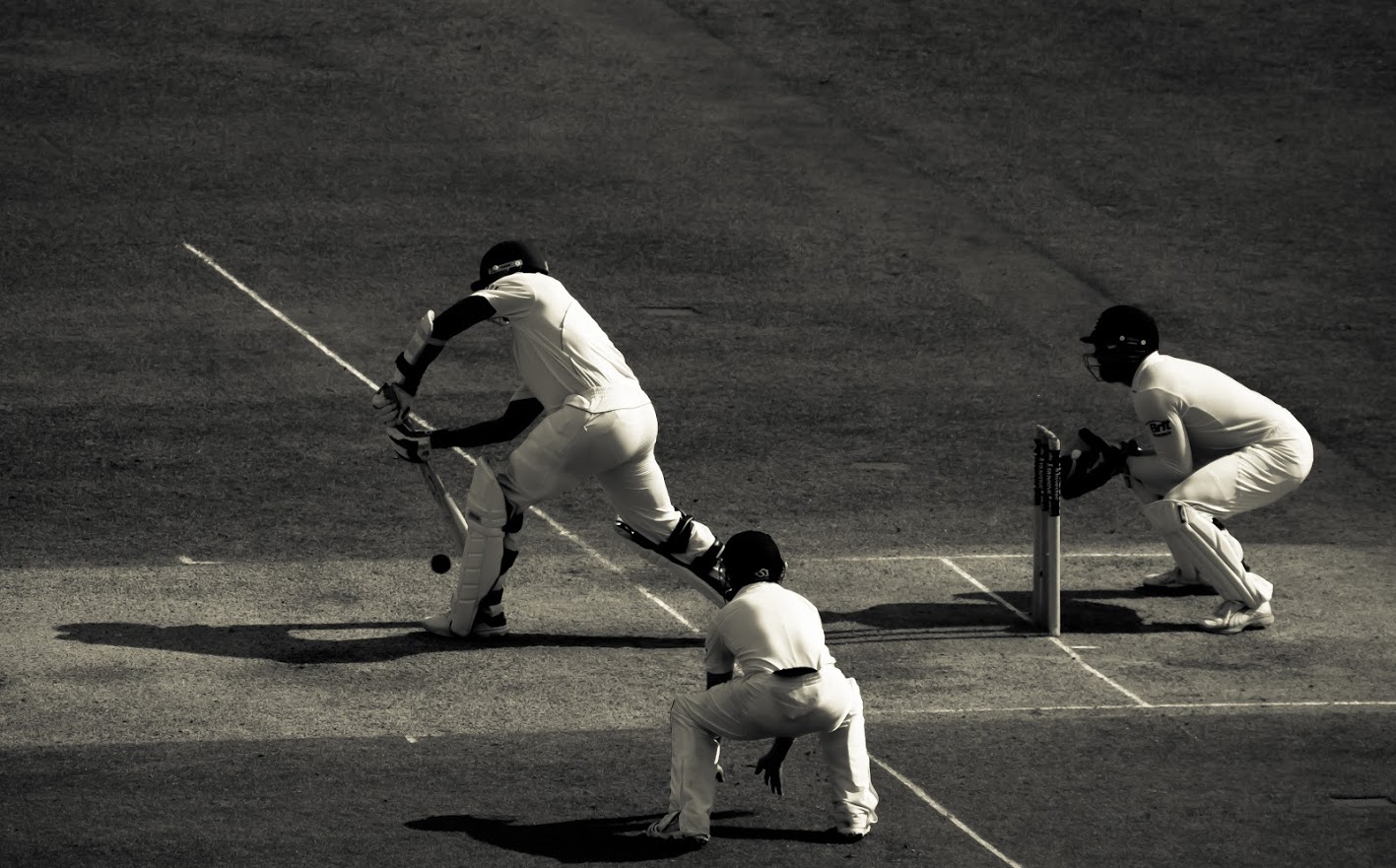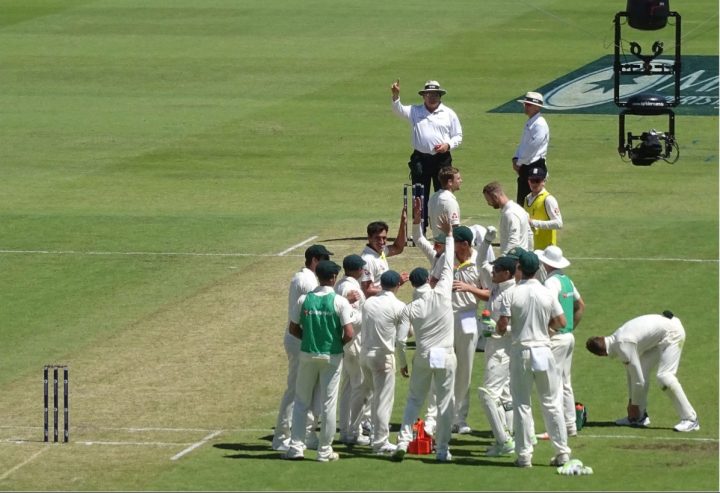We’ll have our say on the 1st Test in Antigua after the game. In the meantime, Robert Meakings takes us back in time to look at the career of Henry Mitchell. I’m hoping we can do more cricket history articles in the coming months, so get in touch if you’d like to take part. Cheers.
Before W.G. arrived on the scene, R.A.H. Mitchell, affectionately known as ‘Mike’, was regarded as England’s finest amateur.
Mike’s magnificent 82 for Eton against an M.C.C. XI in 1860 announced his arrival as a batsman and ensured his instant and widespread fame. An innings of 70 out of Eton’s first innings 98 against Harrow soon followed, and with a year left at Eton he represented the Gentleman at Lord’s, the youngest player ever to do so.
At Oxford Mike scored 37 out of 64 and 53 out of 158 as a Freshman against Cambridge and as captain of the university for a record 3 seasons he transformed the team’s fortunes with his innovative captaincy, beating Cambridge on each occasion and averaging 42 in the process. Unfortunately, in his third year Mike’s father suffered financial ruin and he suddenly found himself in need of a profession. Mike’s subsequent appointment as a Master at Eton effectively ended his first-class career, and began a new 30-year chapter as coach and mentor.

When Mike first tasted coaching success over Harrow in 1869, Eton had only beaten them in one of their previous 12 meetings. Over the course of the next 8 seasons there would be a further 5 victories over their rivals.
In 1870 Eton were captained by George (Lord Harris), one of the greatest administrators of the game. Mike taught his pupils to bat properly and attractively, always ready to reach forward and drive in what became known as the elegant Etonian forward style. Harris was a dedicated pupil and devoured Mike’s values and coaching.
Mike captained from the boundary, but in 1871 when his management of the bowling got confused, his message of ‘no change’ became ‘put on Napier-Miles’. This greatly irritated the Eton captain who was astonished when his occasional bowler castled Harrow’s number 3.
Mike’s coaching was paying off. In 1872 Eton had 3 Lyttelton’s in the side. 5 years later there were 3 Studd’s in the XI, together with Ivo Bligh who famously recaptured the Ashes in 1882/83. In 1878 they were joined by Martin (Lord Hawke), another dominant force on and off the field who introduced winter pay for professionals.
In the history of Test cricket, 21 Etonians have represented England, 13 of them were coached by Mike. 27 of his disciples became cricketing blues at Cambridge, with 9 captains. At Oxford there were 22 blues and 4 captains.
When ill health forced Mike to retire, a presentation was held at Lord’s in 1897. All the living Eton captains from 1865 were present as Lord Harris gave the speech expressing sincere appreciation and affection for a legendary player and coach. With that the magic was gone. It would be another six years until Eton beat Harrow, and England have perhaps never been more indebted to a coach for nurturing the skill and spirit that epitomises our summer game.
Robert Meakings









So Eton produced two more England cricketers than it did Prime Ministers. I believe Willesden High School can, accurately, make the same claim.
A century or so later and we’re still waiting for the second decent English coach…
BTW what a petty and spiteful comment on the Guardian’s OBO to Bonner making his century. Scored too slowly for you, has he? What a vile rag that so-called newspaper is.
Interested to know whether you extend the same harsh (or petty and spiteful, depending on your point of view…:- ) judgment to each and every website or blog whose comments section include the odd (or regular!) snide comment. You know, just to be reassured that you really are making a stand for good manners rather than indulging in some political partisanship…
I’ve repeated the Albert Trott story more than once down here, so here are three other old player stories I’ve picked up:
#1
Jimmy Sinclair – who scored SA’s first test century? A Nourse? Some griity opener? No – their first century (and th next two) were scored by buccaneering all-rounder Jimmy Sinclair. Sinclair scored 104 out of 140 against Lord Hawke’s all-conquering tourists. Among other things Sinclair escaped from a Boer War POW camp and hit a ball on to a passing train which supposedly took it to another city. His final stats aren’t that remarkable – his batting declined when he wouldn’t temper his hitting and his seam bowling suffered as SA prepared pitches for their spinners – and he died young in 1913 (I can’t find a cause). In one tour match in 1907, SA were bowled out for 47 against a Sussex team captained by CB Fry and conceded a first innings lead of over a 100 – Sinclair was promoted to open, blasted 92 and his team won by 30 runs.
#2
‘Jack’ Russell – who scored the first centuries in each innings for England (and second ever)? Little known Essex opener CAG ‘Jack’ Russell – who never played again. Russell performed the feat in the deciding test of a SA tour and to make it more remarkable i) he was so ill he had to bat down the order in the second innings ii) only one other England batsman made 50 in the match. Russell took time to recover from his illness and in the meantime England discovered Herbert Sutcliffe.
#3
Norman Gordon – Gordon holds the record of most deliveries bowled by a seamer in a test (the Durban timeless test in 1938-39). He took a horrible 1/240 in the match but was actually the top wicket taker in the series and dismissed batsmen the quality of Hutton and Hammond three times. WW2 interrupted his career – and killed his opening bowler partner Chud Langton whereas Gordon became the first test cricketer to live to be a hundred (and I think may still hold the record of the oldest ever test cricketer having lived to be 103).
Great share!
Found your post interesting to read. I cant wait to see your post soon. Good Luck for the upcoming update.
This article is really very interesting and effective.